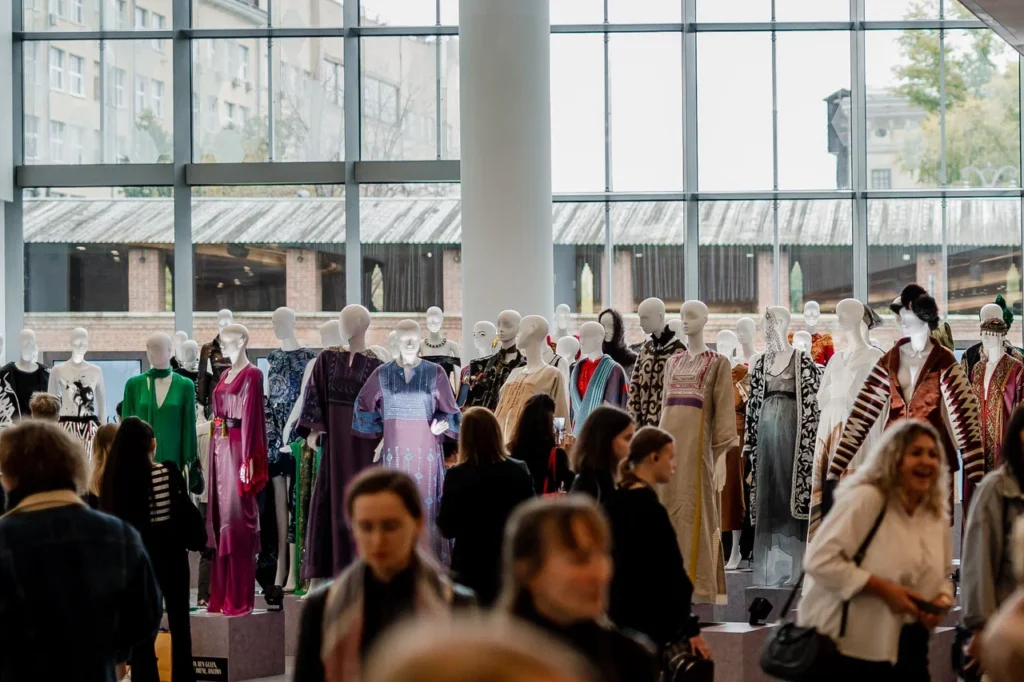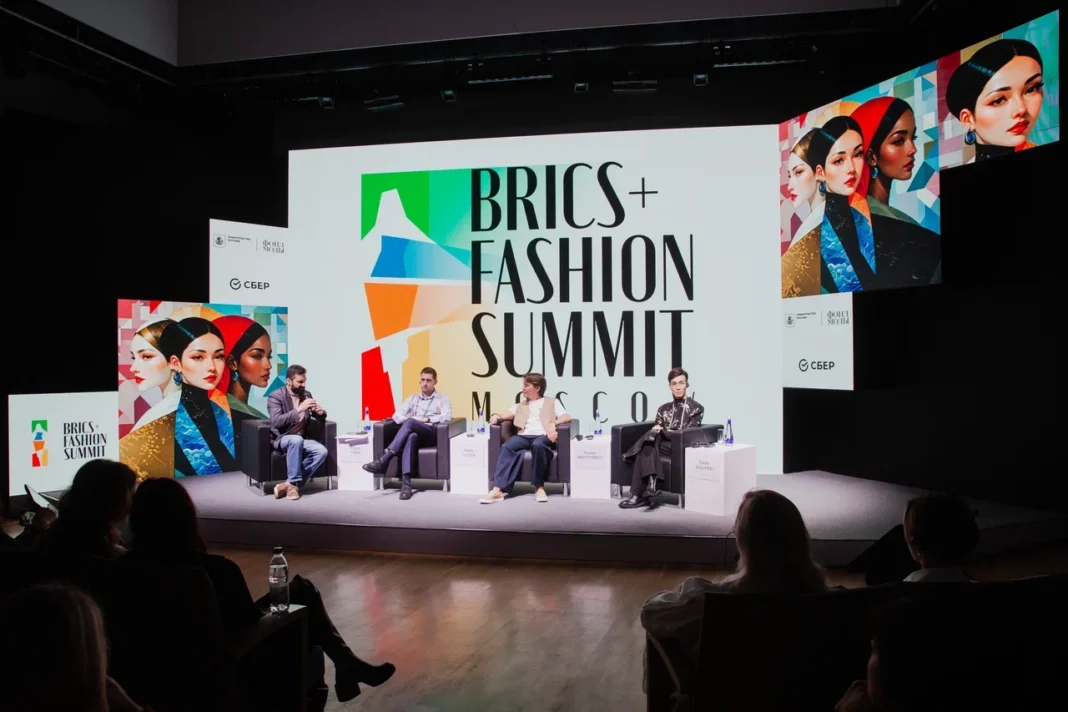In early October, while Laos was immersed in ASEAN responsibilities, the BRICS+ Fashion Summit in Moscow brought together over 80 countries, including several Southeast Asian nations. The summit spotlighted how fashion and textile traditions can drive cultural diplomacy and strengthen international ties.
With Asia’s textile market projected to hit USD 236.8 billion by 2024, ASEAN Fashion Week President Hayden Ng praised the summit as a “crucial communication platform for emerging nations, as it amplifies their voices on the global stage, fosters cross-cultural exchange, and enables collaboration in fashion innovation.”
Held alongside Moscow Fashion Week, from 3 to 5 October, the summit also aimed to highlight the rising influence of Asian designers in the global fashion scene.
A highlight of the summit was the “Heritage” exhibition, featuring cultural diversity from over 40 countries. Notable Asian brands included China’s KENSUN, which integrates traditional painting techniques into textiles, and Laos’s LeLao, which merges cultural heritage with sustainability. Designers like Indonesia’s RAEGITAZORO and India’s NITIN BAL CHAUHAN also spotlighted the creative power of emerging economies.
Cultural Appropriation Concerns Arise with Rising Interest in Southeast Asian Textiles
However, as global interest in Southeast Asian textiles and fashion grows, so do concerns over cultural misappropriation.
Traditional garments like the sarong, batik, and Ao dai hold deep significance, often disregarded by international brands, said Nguyen Vi Huu Canh, Head of Fashion Sector, VDAS Vietnam Design Association, and CEO of Cooper & Co., highlighting the event’s importance in enabling emerging countries to learn, access new technologies, and bolster their national brands for international competition.
“Cultural appropriation is a sensitive issue globally, including in Southeast Asia (SEA), where cultural symbols, attire, and traditions are often commercialized without acknowledging their roots,” he said.

Cultural appropriation became a focal point of the summit’s discussions, with smaller nations expressing concerns over the misuse of their deeply rooted traditions.
“There’s a real problem when cultural symbols are commercialized without recognition or respect for their roots,” Canh remarked.
A notable example is Victoria’s Secret’s 2017 runway show, which faced criticism for using Southeast Asian motifs without acknowledging their origins. Canh pointed to the inherent similarities in textile patterns across Vietnam, Laos, and Malaysia, yet cautioned that each design carries a unique cultural narrative.
“When I randomly changed the colors of a Vietnamese pattern, it coincidentally resembled a Lao one. However, the three stories behind the patterns and garments are entirely different. I believe that the narrative conveyed behind them is what makes the difference when we talk about culture,” he explained.
ASEAN Designers Advocate for “Slow Fashion” to Preserve Cultural Integrity
In the globalized fashion industry, Southeast Asian nations increasingly advocate for ethical practices to honor their traditional patterns. Canh highlighted that cultural appropriation raises pressing issues around respect, ownership, and collaboration, pointing out that misusing cultural elements often reflects colonial patterns, where powerful groups benefit from marginalized communities without giving back.
The rapid advancement of technology, particularly AI, presents both challenges and opportunities for Southeast Asian fashion. While some worry that mass production or algorithm-driven designs could dilute cultural authenticity, others view technology as a means to preserve and innovate. For instance, Vietnamese designer Công Trí has experimented with using technology to enhance traditional hand-weaving techniques, incorporating Lanh My A, the traditional silk fabric from the craft village of Tân Châu, which is woven and dyed using a rare black fruit called ‘Mac Nua,’ to create contemporary collections.
Nguyen Huu Canh spoke more about the use of AI in retail and fashion in one of the BRICS+ panels on 5 October.
“As AI becomes more prevalent in design, there’s a concern that these cultural patterns may lose their authenticity if mass-produced or manipulated by algorithms without understanding their historical significance,” Canh said.

However, consumers are increasingly aware of the importance of sustainability and cultural integrity in fashion. Southeast Asian designers are now advocating for “slow fashion,” where technology is used not to replace tradition, but to support artisans in keeping these cultural expressions alive, the Vietnamese designer noted.
This approach not only supports local artisans but also aligns with BRICS’ broader sustainable development goals.
Laos Seeks BRICS Membership to Bolster International Cooperation
In this context, Laos, along with other Southeast Asian nations, is leveraging cultural diplomacy to establish meaningful global partnerships. In its pursuit of BRICS membership, Laos aligns with a broader movement among developing countries aimed at joining the global market, focusing on cultural identity and modern sustainability.
The recent BRICS summit in Kazan, held from 22-24 October, marked a crucial moment for Laos, which sought to deepen international partnerships and promote multilateral collaboration among the BRICS community.
Through platforms like BRICS, Laos and its Southeast Asian neighbors are finding ways to navigate global pressures while remaining true to their cultural roots, making fashion, among other industries, crucial diplomatic instruments for both cultural expression and economic cooperation.
“Fashion also serves as a powerful geo-political tool in Southeast Asia. Traditional attire worn by leaders symbolized unity and cultural diversity, promoting cooperation among nations,” Canh remarked.



